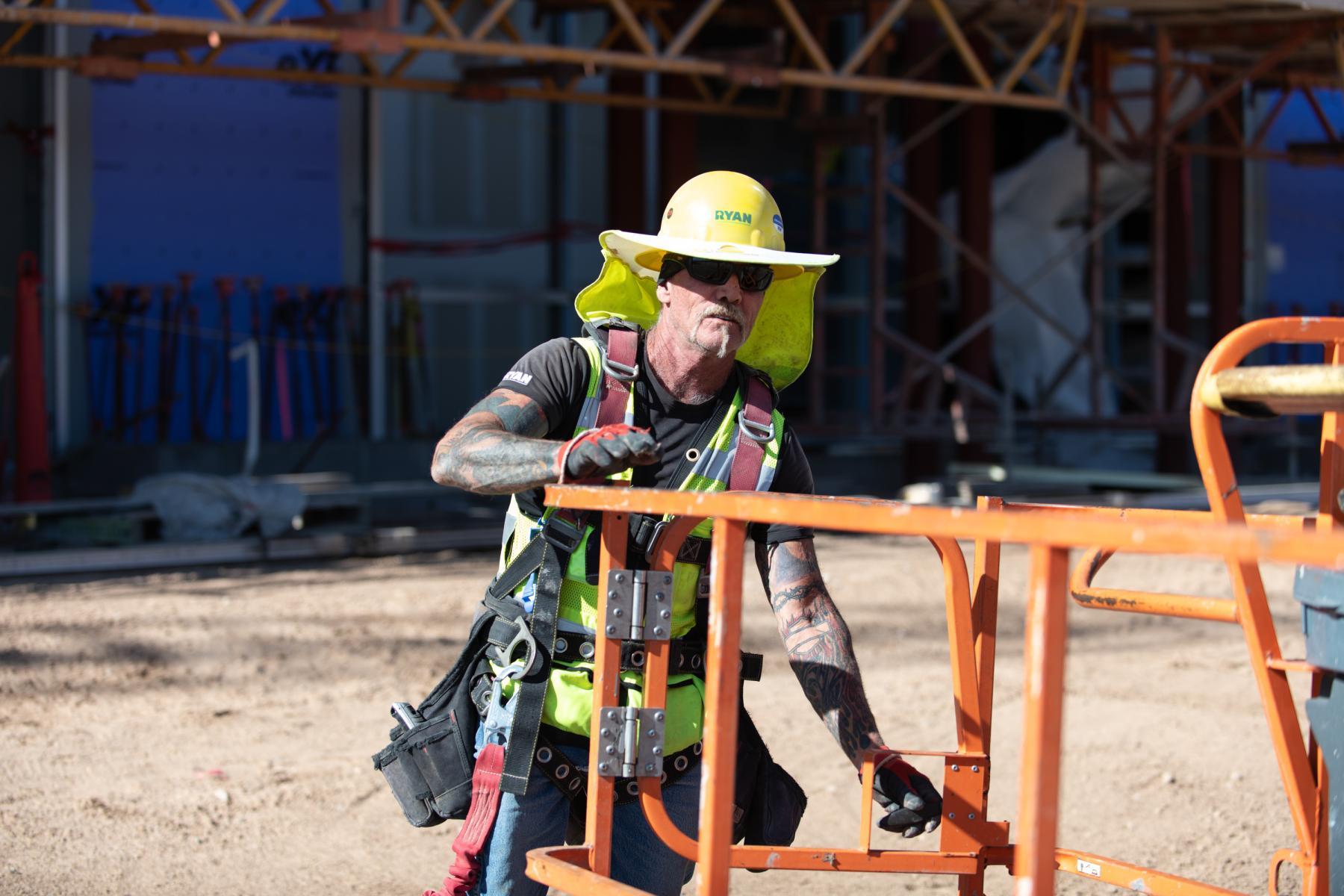How We’re Keeping Our Project Sites Safe: 7 Summer Construction Safety Tips

Summer can be slow season for some, and a very busy one for others—especially those in construction. While the season provides plenty of sunlight and relatively stable weather, it can also mean long, hot and dangerous days for our field workers, making construction safety even more important.
With nearly 150 projects in progress right now across the country, our construction and field teams are constantly battling the summer elements that can include: extreme temperatures; severe storms like monsoons, hurricanes and tornadoes; floods and even poor air quality from nearby forest fires.
Besides our typical construction safety protocols that are enforced year-round, we implement summer- and region-specific strategies and procedures to ensure that our field workers return home safe and our projects remain intact. Here’s a few of our summer construction safety best practices:
- Have a preparedness plan in place. All of our project sites have an emergency preparation plan that inform employees, clients, visitors and customers what to do and where to go before, during and after a severe summer storm; plans are updated yearly. It also alerts employees who may not be on the project site but still have critical roles in the preparation plan, such as IT and technology, HR, and accounting teams.
- Monitor the weather. Unlike hurricanes, most thunderstorms, tornadoes and other severe weather can develop almost without warning. Our field management uses national weather apps that alert them of nearby lightning strikes and wind speeds, as well as the OSHA-NOISH Heat Safety tool, which allows workers to calculate the heat index for their worksite. Some tower cranes are also equipped with lightning detection systems that monitor nearby strikes.
- Shut down the project site when necessary. When lightning is within 15 miles of a project, all workers are removed from scaffolding to ensure their safety; and as wind speeds begin to intensify to unsafe levels, all crane activity will cease completely. Work can begin 30 minutes after the last lightning strike. We also have thresholds for air quality to protect our workers and subcontractors from nearby wildfires. In the event that the weather or air quality becomes too dangerous, we will have our teams evacuate and we will shut down the project site for the day. Field teams us SMS messaging alerts to communicate potential threats with personnel.
- Train workers on heat illness prevention. All contractor, subcontractor and Ryan field employees (including temporary workers) must be trained in heat illness prevention before beginning work. This program—influenced by the OSHA-NOISH Heat Safety tool—covers the different types of heat illnesses, how to recognize common symptoms and what to do in the event that they or someone else is suffering from heat exhaustion or heat stroke.
- Encourage water breaks and rest time. On our project sites, we ensure that plenty of beverages with electrolytes and water additives are provided to our workers, along with freezers of ice to keep drinks cold. Job trailers offer air conditioning and are fitted with outside canopies to provide shade and encourage rest and rejuvenation.
- Avoid the hottest part of the day. Whenever possible, we encourage our field teams to schedule the majority or more physically demanding work during the early, cooler hours of the day to avoid peak temperatures.
- Reinforce the plan. Communication is key! “Toolbox Talks” and “Plan of the Day” meetings provide ample opportunities to discuss upcoming weather conditions, as well as correlating emergency preparedness plans.